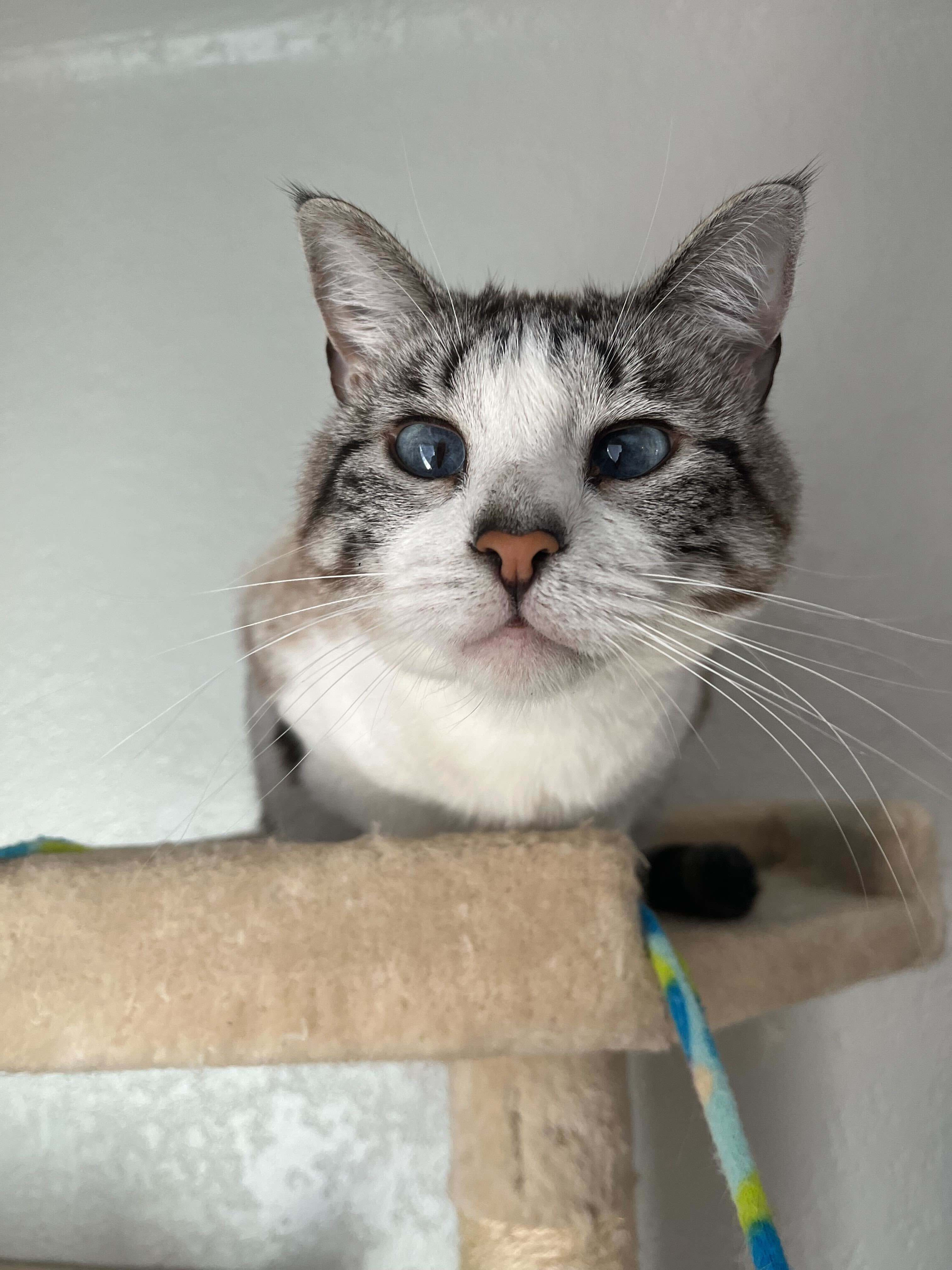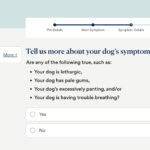Crossed eyes, medically known as strabismus, is a noticeable condition in cats where both pupils permanently point towards their nose. This condition, also referred to as medial strabismus in feline terms, arises from irregularities in the muscles and nerves that govern eye movement.
While many cats with crossed eyes lead perfectly normal lives, it’s understandable for pet owners to have concerns about this distinctive appearance. This article delves into the causes, implications, and care for cats with crossed eyes, ensuring you are well-informed about your feline friend’s unique vision.
Why Do Some Cats Have Crossed Eyes?
In most cases, crossed eyes in cats are a condition they are born with, often an inherited trait prevalent in certain breeds such as Siamese, Himalayan, Ragdoll, and Persian cats.
The characteristic inward pointing of the pupils is due to the muscles controlling eye movement being shorter towards the center of the face. This is specifically termed medial strabismus. Though less common, lateral strabismus, where eye muscles are shortened towards the outside of the face, can also occur.
For cats with congenital crossed eyes, this condition rarely hinders their daily life, and typically, no treatment is necessary. However, it is crucial to note that if a cat that previously had normal eyes suddenly develops crossed eyes, this is often indicative of an underlying health issue that requires veterinary attention for proper evaluation and treatment.
What Causes Crossed Eyes in Cats?
 gray and white lynx point cat with crossed blue eyes
gray and white lynx point cat with crossed blue eyes
Photo by Claudia Guthrie
The majority of cats born with crossed eyes (congenital strabismus) also exhibit a pointed coat pattern, characterized by a light body color contrasted with darker fur on their face, paws, tail, and ears. Research suggests a potential link between the gene responsible for this coat pattern and the development of the eye muscles and related nerves. This genetic correlation explains why certain breeds with pointed patterns are more predisposed to congenital strabismus.
When strabismus develops suddenly in a cat that previously had normal eye alignment (acquired strabismus), it is usually a symptom of a disease that directly impacts the eye socket, eye muscles, the nerves controlling the eyes, or even the brain itself. Several conditions can lead to changes in eye position, including:
- Trauma
- Abscesses
- Inner ear infections
- High blood pressure
- Cancer
Acquired strabismus in cats is seldom the sole symptom. Often, other signs accompany this condition, which may include:
- Decreased appetite
- Vomiting
- Difficulty walking or incoordination
- Swelling of the face or around the eye
- Rapid, involuntary eye movements (nystagmus)
If your cat displays these symptoms alongside newly developed crossed eyes, it is imperative to seek immediate veterinary care, possibly requiring an emergency visit to ensure your cat receives prompt relief and diagnosis.
Veterinary diagnostics will typically include a comprehensive blood panel and X-rays. In many cases, advanced imaging techniques such as CT scans or MRI are employed to accurately diagnose conditions affecting the eye, ear, and brain.
Treatment Options for Cats with Crossed Eyes
Treatment for crossed eyes in cats largely depends on whether the condition is congenital or acquired. Congenital strabismus typically does not require treatment, as it generally does not impact the cat’s quality of life. However, acquired strabismus necessitates treatment aimed at addressing the underlying cause.
For acquired strabismus resulting from viral, bacterial, or immune system issues, treatments may involve oral medications such as antibiotics or steroids. Conditions like tumors, abscesses, and certain inner ear infections might necessitate surgical intervention. In severe instances, surgery could lead to enucleation, which is the removal of the eye. Cats generally adapt remarkably well to losing an eye and maintain a good quality of life post-surgery.
Vision in Cross-Eyed Cats
Cats born with crossed eyes usually are not blind. However, depth perception relies on the eyes working in unison to transmit signals to the brain. Consequently, cats with congenital strabismus might experience challenges in judging distances. Despite this, they are typically adept at adapting to their altered depth perception and lead full, active lives.
For cats that develop acquired strabismus, vision is more likely to be significantly affected. The extent of visual impairment and the potential for vision recovery are contingent upon the underlying cause of the strabismus. Your veterinarian is equipped to assess your cat’s vision during a physical examination and provide a detailed prognosis.
How to Care for a Cat with Crossed Eyes
Cats recovering from acquired strabismus or those with significant vision changes may require a modified environment to support their needs.
For example, compromised depth perception and balance issues can make elevated furniture and cat trees hazardous. Pet owners should ensure easy access to litter boxes, ideally using low-sided, uncovered options. Food and water bowls should be conveniently placed on the primary level of your home where your cat spends most of their time.
Severely affected cats can benefit from physical therapy, designed to strengthen remaining nerve pathways and muscles and improve movement coordination.
Cats with congenital strabismus often enjoy normal lifespans and robust health without significant complications. Nonetheless, due to their reduced depth perception, it is generally safer for them to be indoor-only cats, minimizing exposure to outdoor dangers such as traffic and predators.
Preventing Crossed Eyes in Cats
While the genetic factors contributing to congenital medial strabismus are not preventable without selective breeding practices, certain causes of acquired strabismus can be avoided through proactive care:
- Collaborate with your veterinarian to prevent severe dental disease, which can lead to abscesses behind the eye.
- Seek prompt veterinary attention for ear infections to prevent middle ear complications.
- Regular blood work and annual wellness exams are crucial for early detection of potential health issues before they escalate.
By understanding the causes, symptoms, and care requirements for cats with crossed eyes, owners can ensure their feline companions, whether congenitally or acquiredly cross-eyed, live healthy, happy, and fulfilling lives.


